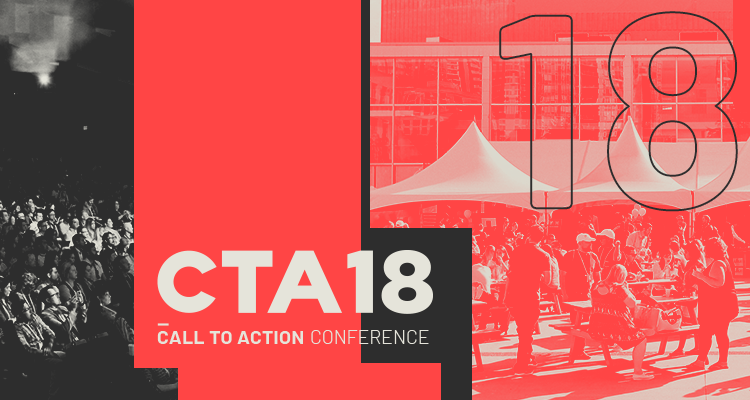
Ah, they grow up so fast.
The fifth annual Call to Action Conference has now come and gone and it was a helluva time, as always. Having been at Unbounce for 4 years now, I’ve seen CTAConf grow from a grassroots sproutling with 300 attendees to a 1,000-person event taking over the Queen Elizabeth Theatre.

This year’s theme was “The Marketing Revolution” in response to the fact that marketing has changed. It’s tougher than ever and what used to work, doesn’t anymore. Twenty-two marketing experts took the stage to give new solutions to old challenges and actionable solutions to new ones—not to mention the food, people, games, swag and after-parties that made it the best CTAConf yet.
Speechless. My heart, brain, and stomach is full! You did it again @Unbounce! See you next year!
#CTAConf pic.twitter.com/hU8OOgcmGB
— Rajveer Chohan (@Raj_i) August 30, 2018
It’s fantastic to be at a conference that is invested at up-levelling experienced digital marketers, not just new ones. Something for everyone. Grateful for #CTAConf.
— Britt Senko (@brittsenko) August 28, 2018
The reason that #CTAConf is the only must-attend conference for our team is because they're not afraid to get crazy-specific in the talks.
Deep, nerdy, and useful, even if it's not 100% relevant to everyone, is so much better than kinda interesting to 100% of the audience.
— Junction (@JunctionYVR) August 29, 2018
Take a trip down short-term-memory lane with me to relive takeaways from the stage and see all of the speaker videos and slide decks on the 2018 recap site.
We feel the need, the need for speed
Alternate subtitle: Too Fast, Not Furious. Page speed came up over and over again as something marketers should prioritize in order to keep visitors happy, or keep them at all.
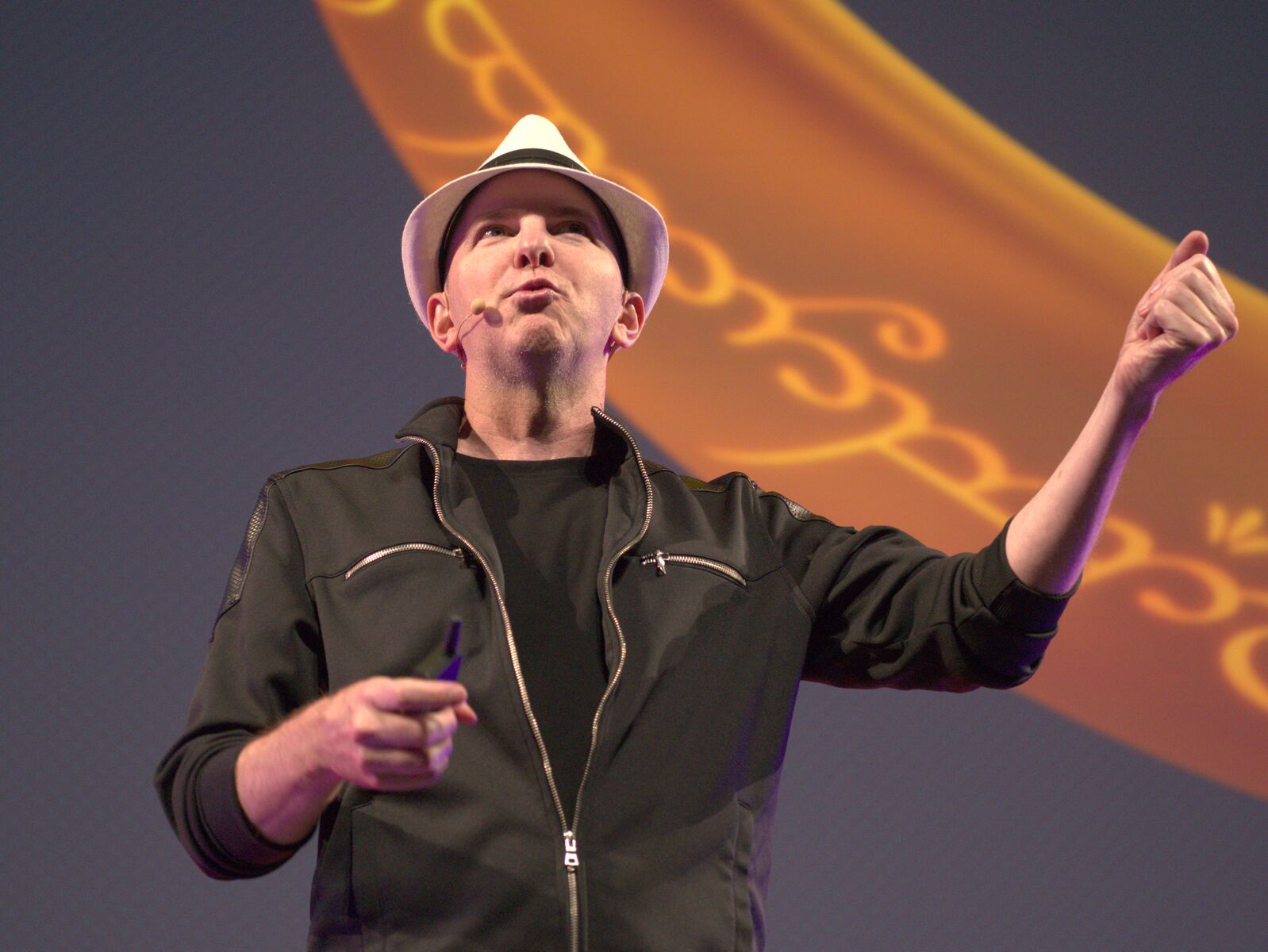
Cyrus Shepard, formerly Head of SEO and Content Development at Moz and now partner at Zyppy, brought page speed up as part of his talk on SEO strategy and engagement metrics that truly matter when it comes to improving rankings. Bounce rate is a deciding factor when it comes to SERP, and the number one reason people will leave your page in the first place is because it’s too slow.
#1 way to reduce #bouncerate? Improve your #sitespeed. Practical #seo tips from @CyrusShepard at #CTAconf. pic.twitter.com/C0KQhSP4tR
— Andreanna (@annamaz22) August 29, 2018
Watch Cyrus’ full talk, SEO Success: The One Engagement Metric to Rule Them All
And of course, we can’t talk about speed without talking about AMP! That is, accelerated mobile pages, which are stripped down web pages designed to load at lightning speed; and something Google is paying very close attention to.
Larissa Hildebrandt, Unbounce Paid Media Manager, and Cole Derochie, Unbounce Product Owner, took to the stage to demystify AMP and emphasize its effects on SEO, Quality Score, and most importantly, conversions. “The only way to get more conversions without raising your bid is by increasing your Quality Score,” they explained, “Which includes expected clickthrough rate, ad relevance, and landing page experience.”
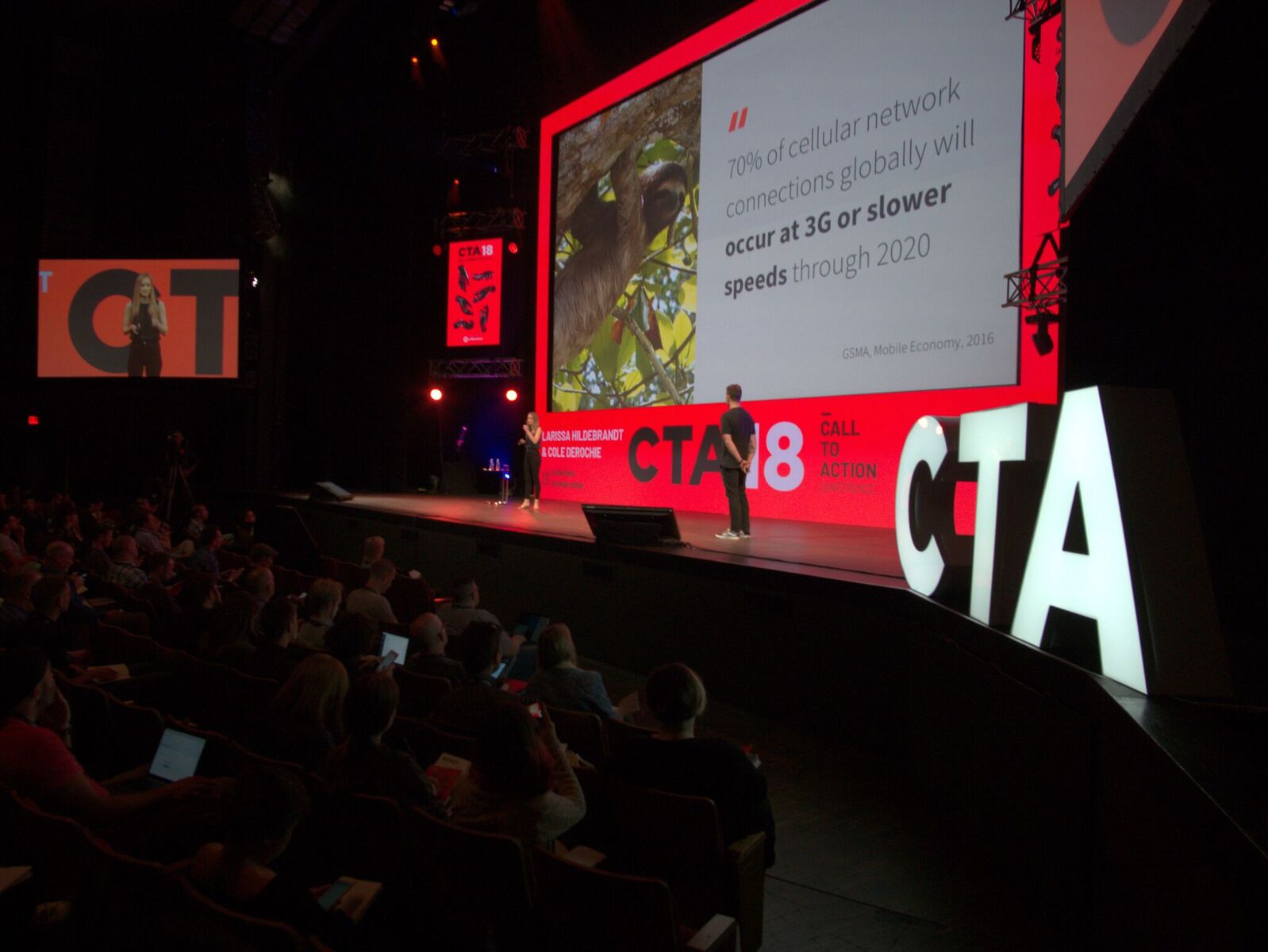
Considering mobile accounts for more than 60% of internet usage and conversions drop by 12% for every second of delayed load time, AMP can have a significant effect on your Quality Score and bottom line. Accelerated mobile pages are currently in closed beta at Unbounce, but you can sign up here to get on the list and be first to know when it’s open season.
Mobile matters, big time @chezlars @colderoshay #CTAconf pic.twitter.com/K5VYIyLKL7
— Kasey R. Bayne (@kaseybayne) August 29, 2018
Content marketing isn’t dead (just way tougher)
In the days of marketing yore, “content was king” and all we needed to do was make it good. Now, the oversaturation of content has made most of us wonder if content marketing itself is a thing of the past. Not so! It’s simply evolved, and so should our content strategies.
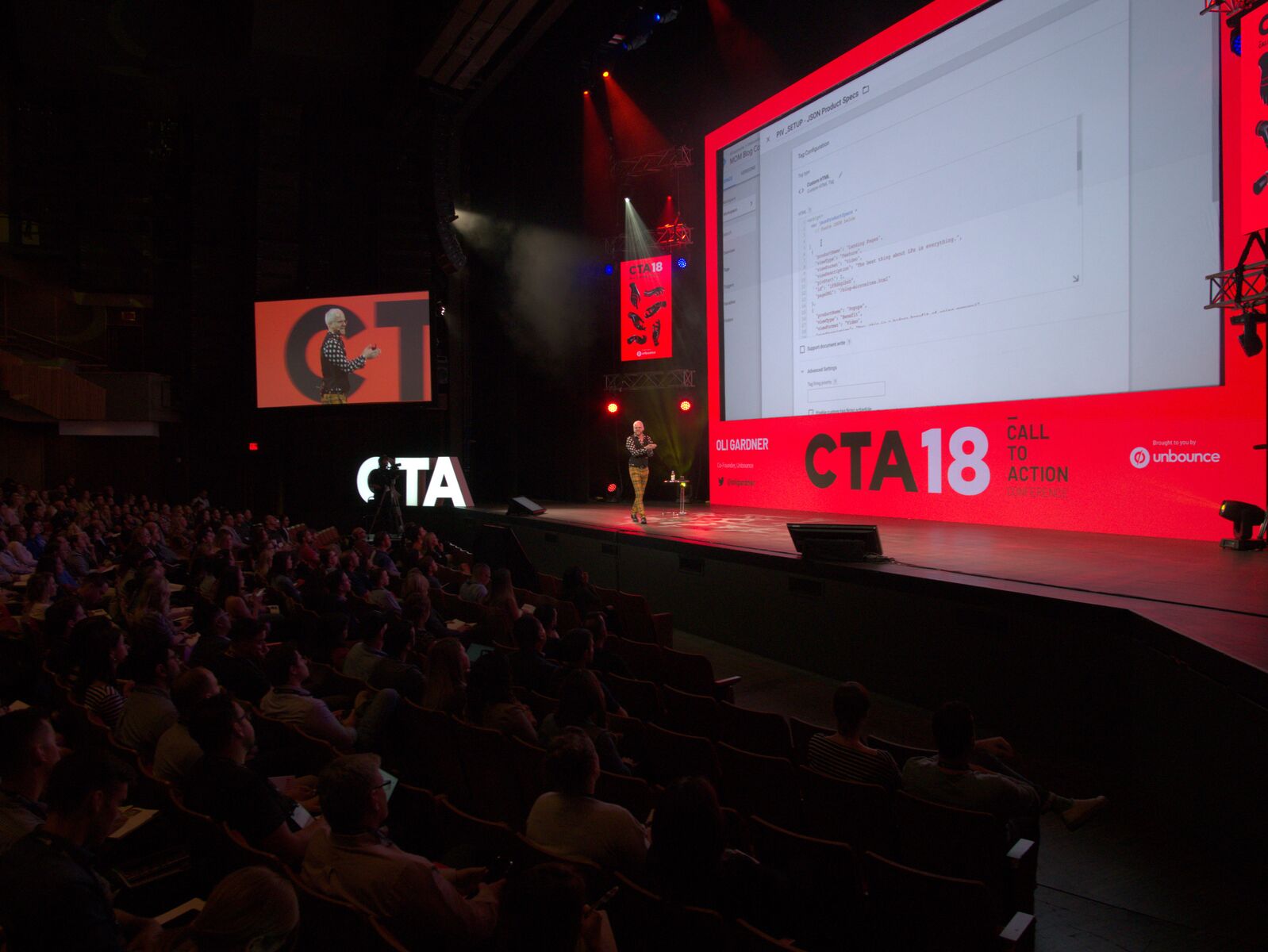
Unbounce Co-Founder Oli Gardner kicked the conference off with his keynote presentation on the “Marketing Optimization Map”—an antidote to broken content marketing. Companies need to create customer-centric content and guide visitors toward product awareness with content that is relevant to them at whichever stage they’re in.
“What’s wrong with content marketing today? No one is talking to readers in a way that brings their product to life” – @oligardner #CTAConf
— Christine Warner (@cvwarner) August 28, 2018
Watch Oli’s full talk, Content Marketing is Broken and Only Your M.O.M. Can Save You
Content marketing master and Co-Founder of Orbit Media, Andy Crestodina, gave a step-by-step guide on “How to beat 99% of content strategists” when it comes to lead generation. Content marketing is worth it, he said, because “People link to content, not sales pages.”
Having a publishing mission (i.e.“Our content is where [audience X] gets [information y] that offers [benefit z]”) gives marketers a 33% better chance at success, and this statement should be prominent across your site, blog, and social profiles. From there, it’s all about finding the right topics for the right audience—using Google, keywordtool.io, Quora, etc.
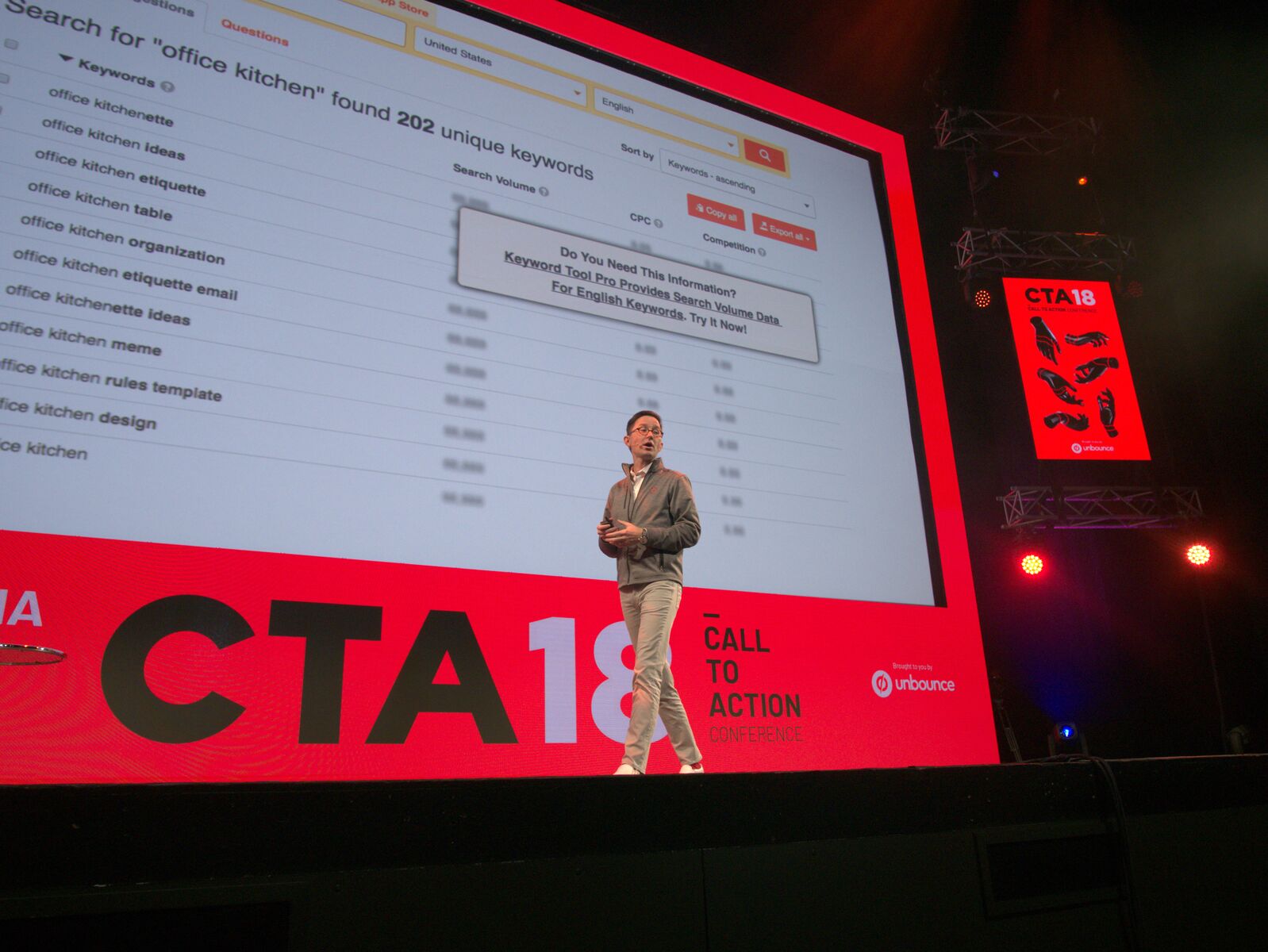
There was’s a ton to take away from Andy’s talk, but one thing that definitely stood out was his emphasis on original research.
“If you want to create content that achieves a high level of both shares and links then you should concentrate on opinion-forming, authoritative content or well-researched and evidenced content.”
“People in search are busy, people in social are bored!” – @crestodina makes some great points against a one size fits all approach #CTAConf pic.twitter.com/qxJMKCgSrV
— Courtney Felix (@courtsfelix) August 29, 2018
Watch Andy’s full talk, Content Strategy and SEO for B2B Lead Generation
Intrinsic sharing and SEO power aside, what can you actively do to promote that content in a still-oversaturated market? Ross Simmonds, Founder of digital agency Hustle & Grind, laid out a comprehensive roads-less-travelled strategy for getting your content in front of the right people, and more of them. “Content marketing is the loudest cocktail party ever. And it’s all our fault,” he started. “We’ve been preaching that content is king and the world has listened. Now content is no longer king—distribution is.”
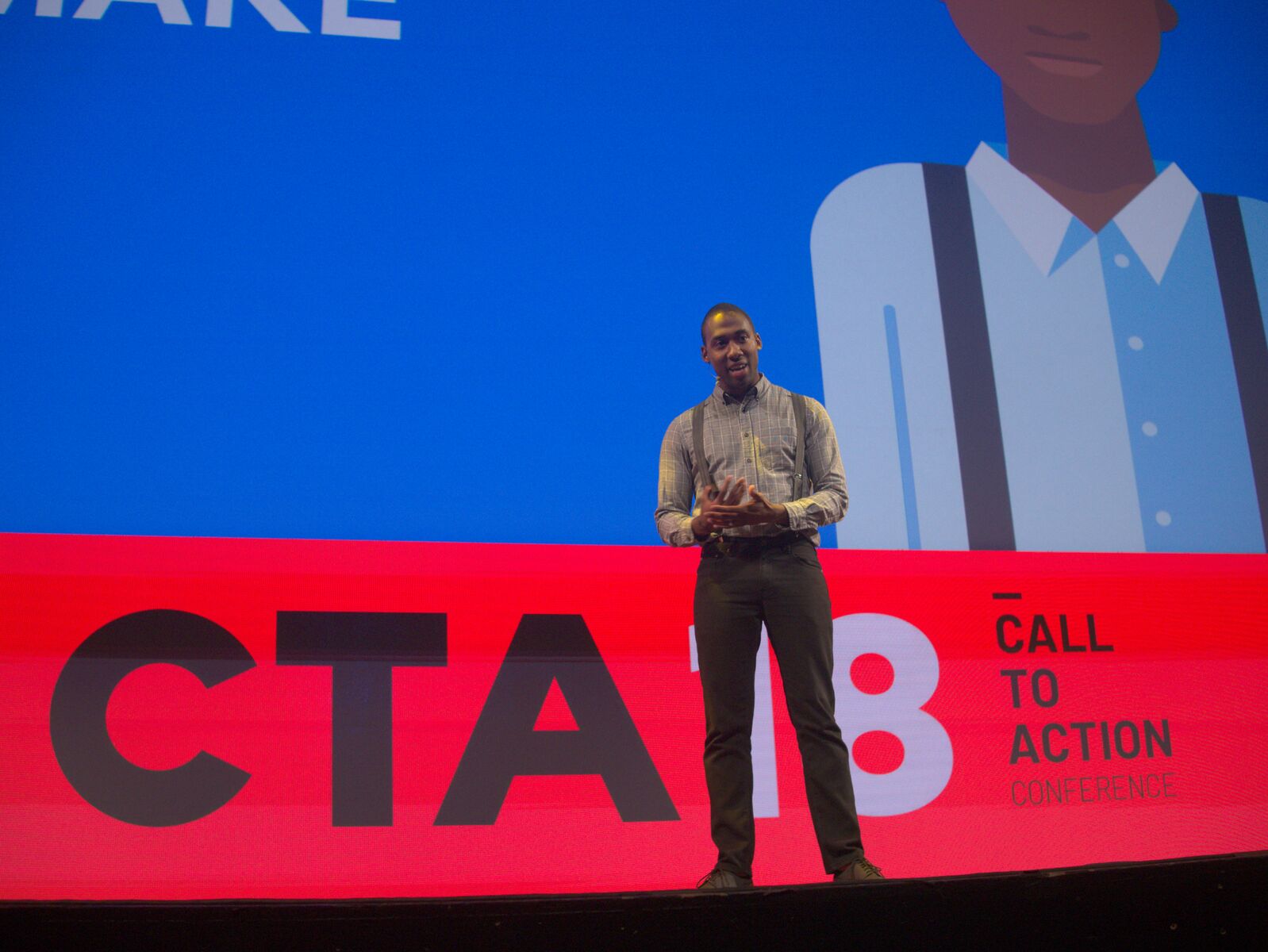
His formula is deceptively simple: Discover → create → distribute. Facebook is particularly great for discovering what your audience is interested in, through Facebook Insights and groups, as well as Quora, LinkedIn, Slack communities, and Reddit, now the third most visited site in the U.S. From there, you can create content specifically tailored to those questions and conversations, and distribute it back through those channels along with multiple others.
Straight up knowledge bombs coming from @TheCoolestCool at #CTAconf – “distribution is king (not content anymore)” #Unbounce #yvrmarketing pic.twitter.com/0LejbOpymC
— Darragh Brady (@Darraghgw) August 29, 2018
Watch Ross’ full talk, Beyond Google: How to Attract Relevant Traffic Through Diverse Channels
Product marketing matters are an outside and inside job
April Dunford is a renowned expert on product positioning, having done it for a series of high-growth startups and global companies before founding her own, Rocket Launch Marketing. The present-day oversaturated market is as difficult for product launches as it is for content, but April knows just how to turn that existing market momentum in your favour.
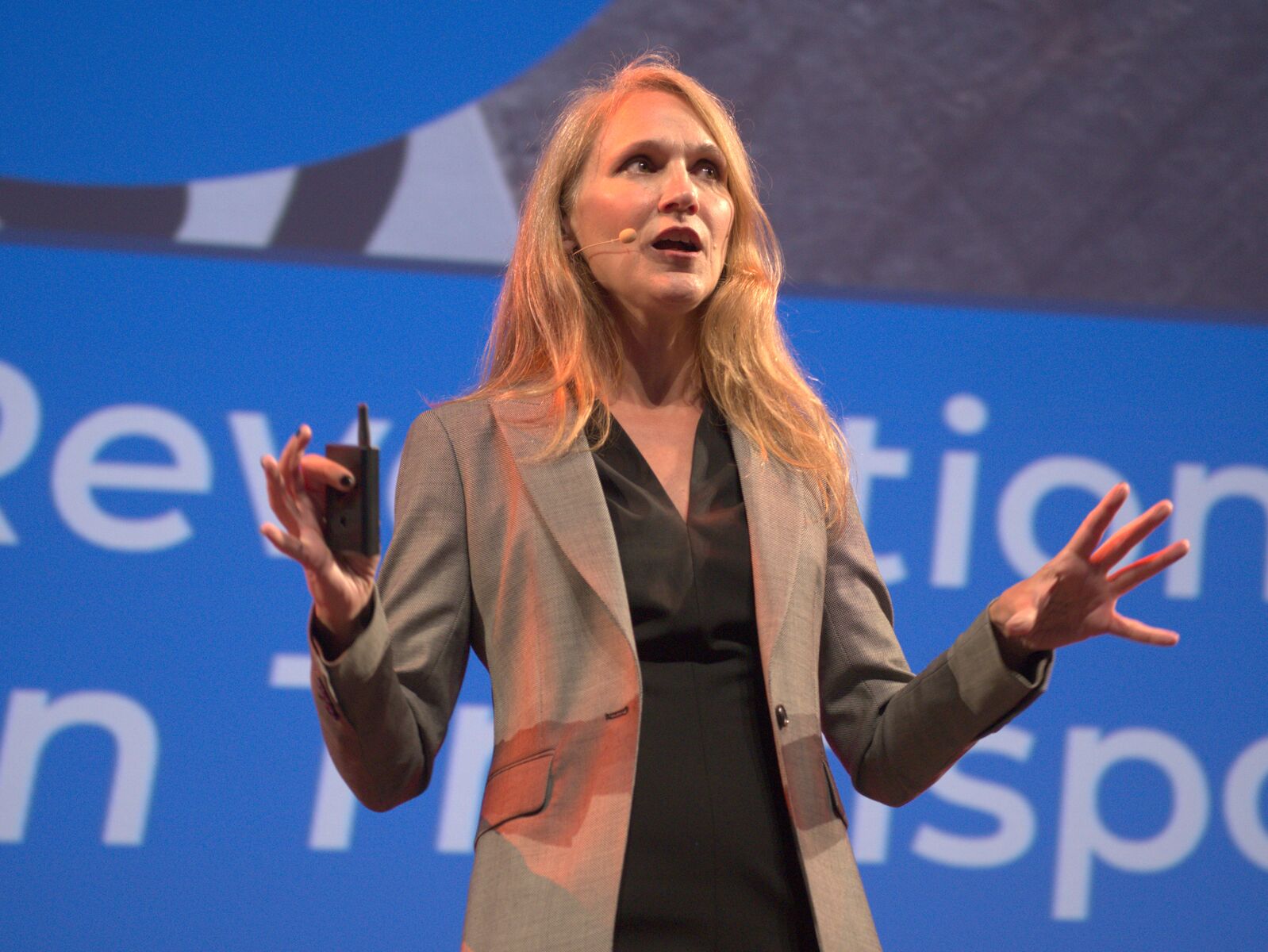
First: declare a market category based on your product’s strengths and let people know what that category is because, “We do not buy what we do not understand.” Position your product in a way that makes its benefits obvious and provides context to your audience—and make those strengths overlap the market.
Parked up, front and centre at #ctaconf to try to absorb all of @aprildunford's wisdom at her kick-ass closing keynote. So helpful to be reminded that stepping back to think about positioning strategy is just as important as executing on any campaign/content/lead generation task. pic.twitter.com/0ghFFVbvJ6
— Katie Berg (@katiepberg) August 30, 2018
Watch April’s full talk, Wind at Your Back: Making Your Market Category Work For You
Before you launch, however, having your product marketing locked down internally is key. Hana Abaza, Head of Marketing at Shopify Plus, shared her story starting as one of two marketers for a company with built-in market pull. A marketer’s dream?
“Six weeks in, I felt like I was chasing a fire hose.”
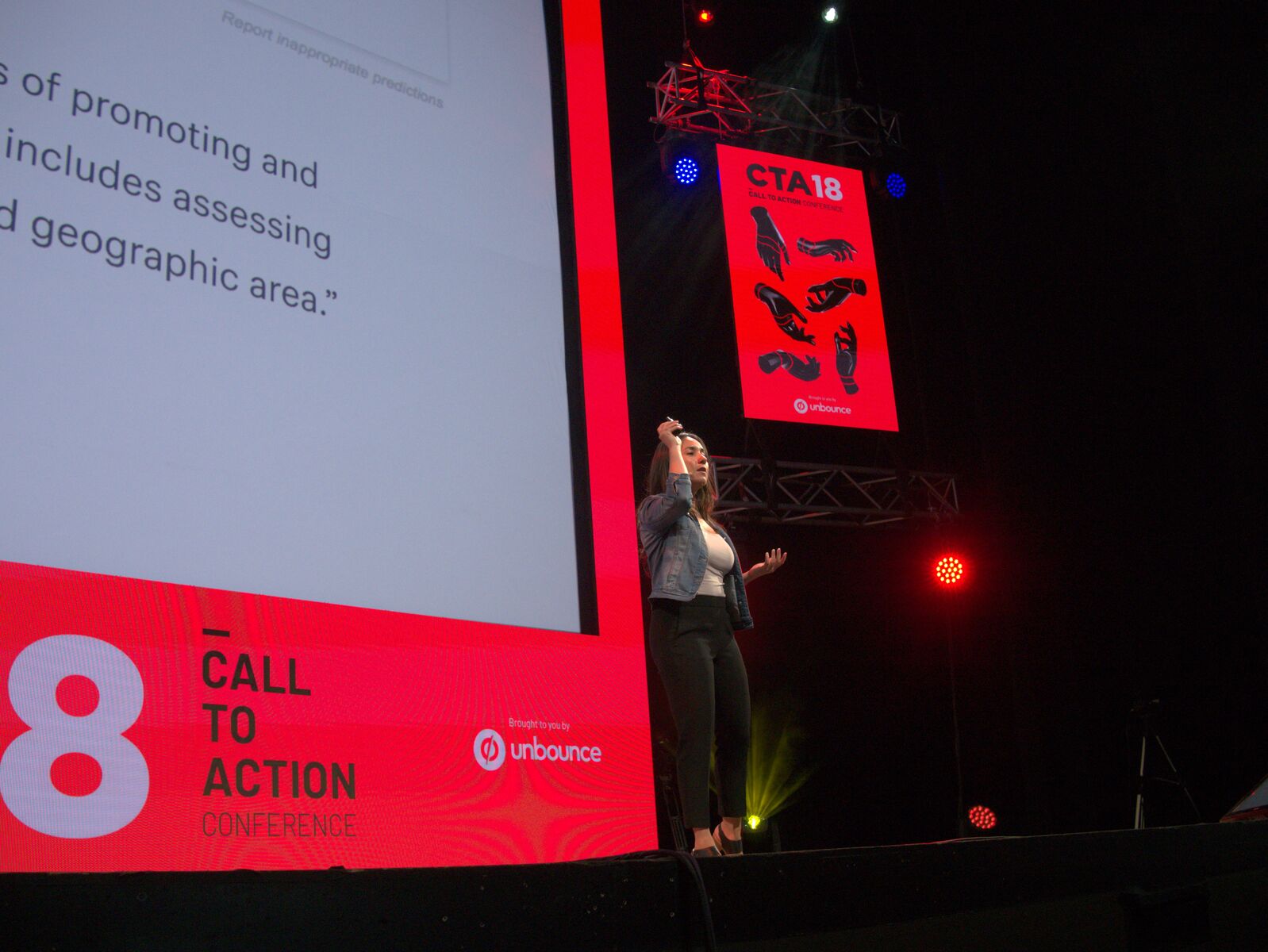
She built Shopify Plus’ product marketing strategy from scratch by looking at it cross-functionally—something that fuels growth, enables teams, and helps build the product. It should overlap the product, marketing, and customer-facing teams and show its success through employees’ ability to explain the product well, a value prop easily understood by prospects, and of course, successful marketing campaigns.
From there, she laid out a detailed positioning, messaging, and go-to-market strategy, and how and when to involve each team.
Really love this framework for Product Marketing as a concept vs a role vs a function from @HanaAbaza #ctaconf #prodmgmt pic.twitter.com/dfKEaIcQ6A
— April Dunford (@aprildunford) August 29, 2018
Watch Hana’s full talk, Product Marketing, Inside and Out
The robots are here and they come in peace
Artificial intelligence seems to be on everyone’s unartificial mind right now, with a secret whispering fear we’ll be automated right out of a job lurking in the back of it. But fear not! It’s not so much about having our jobs replaced as having them enhanced by AI’s capabilities, and finding creative ways to work with it.
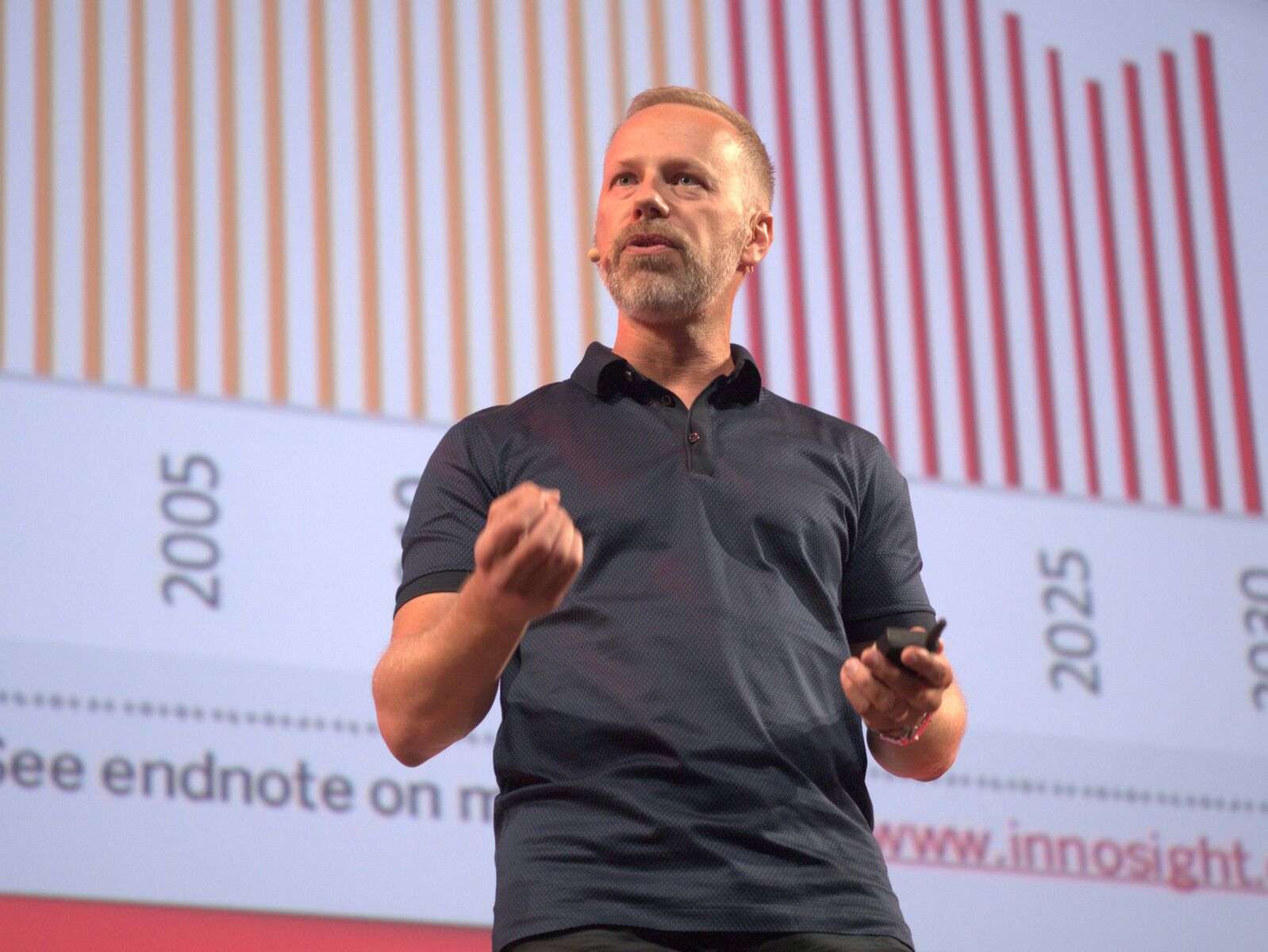
Carl Schmidt, Unbounce CTO and Co-Founder, and Christi Olson, Microsoft Head of Evangelism for Search, both tackled the topic of AI from broad and specific perspectives. Carl spoke of the limitless potential business’ can have if they embrace AI versus the potential for disaster if they don’t keep up (cue Blockbuster reference). Using A/B testing as an example, he wondered whether there really is one best page for your audience, something split testing assumes.
“What if we can use AI to deliver personal and relevant content tailored to an individual?” he asked, before revealing some until-then top secret information about a conversion tool Unbounce is building to do just that.
@schmidtdisturbr, gotta give it up to you. AI is all about taking creativity back and making ourselves, the marketers, the system operators of the AI we select to use. Your talk resonated with me on all levels. Thanks! #CTAConf
— Fernando Nikolic (@fernikolic) August 29, 2018
Watch Carl’s full talk, Join the AI Marketing Revolution: Humans Wanted.
Christi honed in on conversational AI—digital assistants, chatbots, and voice search—and the opportunities it gives marketers to further engage prospects and customers.
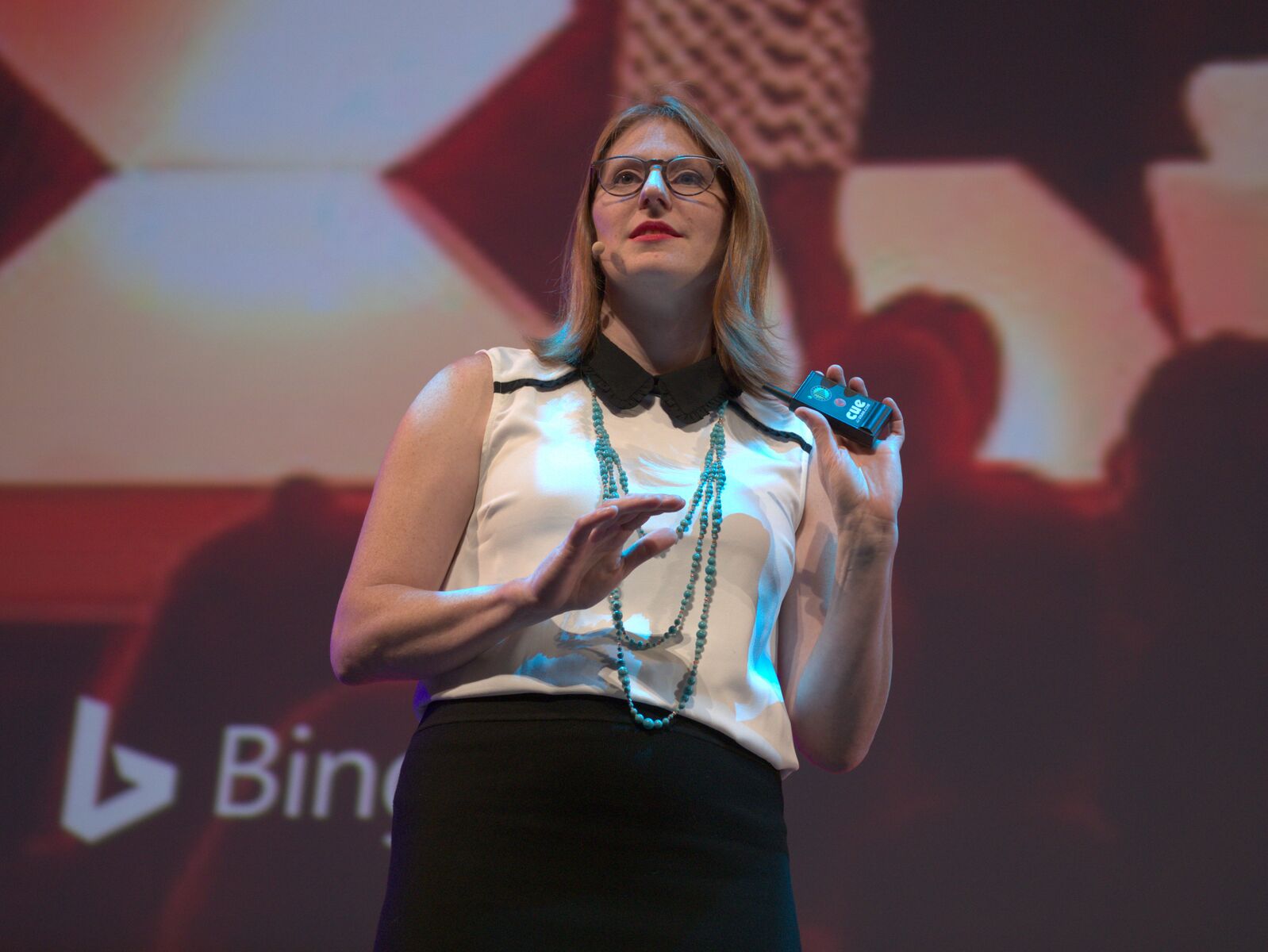
Consumers are switching from using touch as the primary user interface to using voice, she explained, which is a drastic change in how we interact with technology that is led by conversational AI. It’s important that we optimize for brand, conversational tone, query, and “action over answers” to deliver the best possible experience, and develop an overall content strategy to facilitate that.
For instance, you can optimize content to become snippets to capitalize on voice search results and use tools like AnswerThePublic.com to find out exactly what’s being asked.
Wondering where voice search results come from? They come from SERPs—specifically featured snippets! With voice search, the ability to dominate “position zero” in SERPs becomes super critical. @christijolson #ctaconf
#SEO pic.twitter.com/n5XNNAtUYs
— Kelvin (KC) Claveria (@kcclaveria) August 29, 2018
Watch Christi’s full talk, AI and Unchatted Territory.
And there you have the smallest of nutshells I could manage. There are so many more takeaways to grab from the talks mentioned here, and so many more speakers from Google, Zapier, Crayon, STAT Search Analytics, and more to learn from. Head to the Call to Action Conference 2018 Recap site below to watch all of the speaker presentation videos and get your hands on their slide decks and resources, all ungated and completely free. Then grab a friend and join us for CTAConf 2019, because tickets are on two-for-one sale right now!
Original Source: Missed Call to Action Conference 2018? Get the Top Takeaways, Speaker Videos, and More

No comments:
Post a Comment